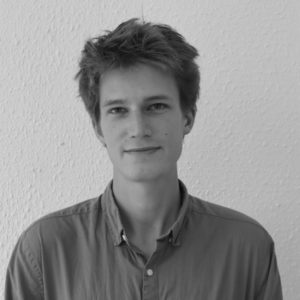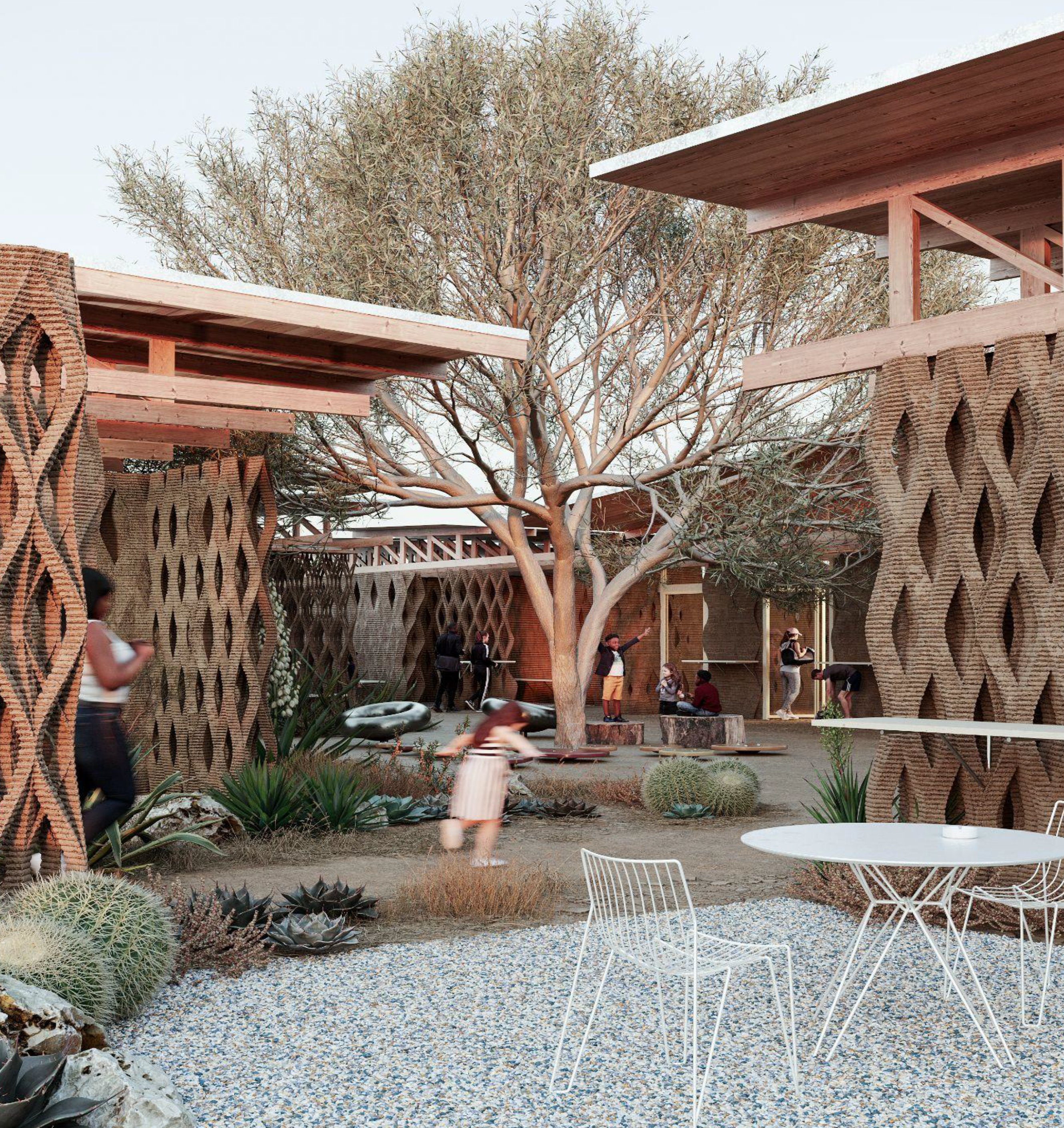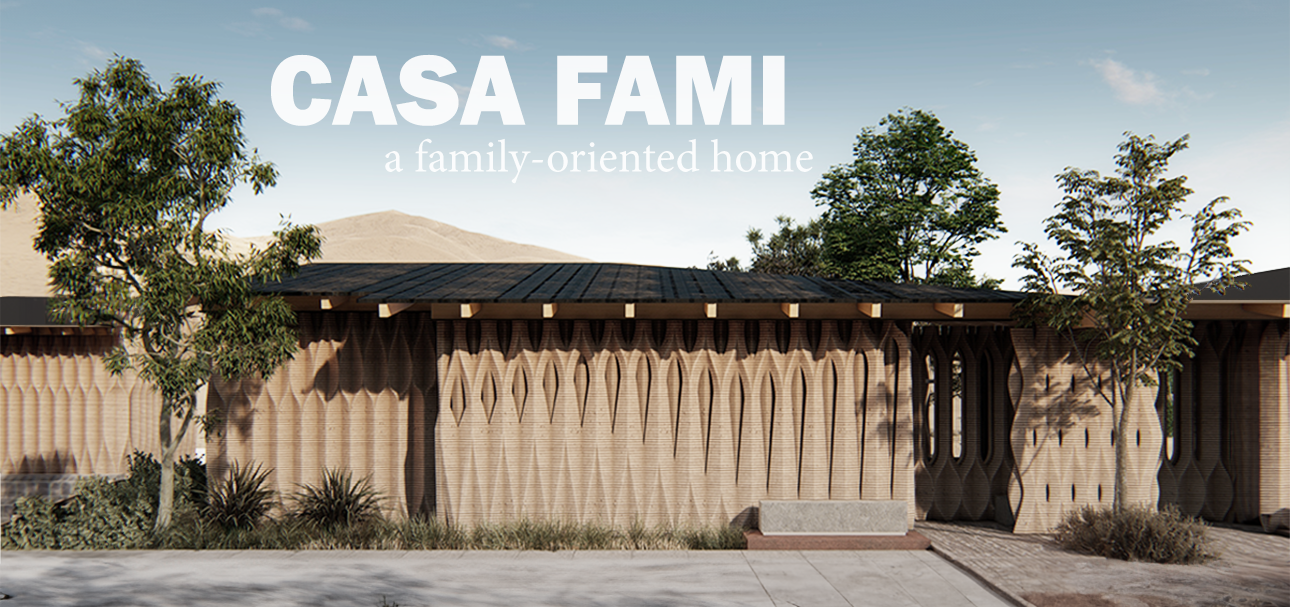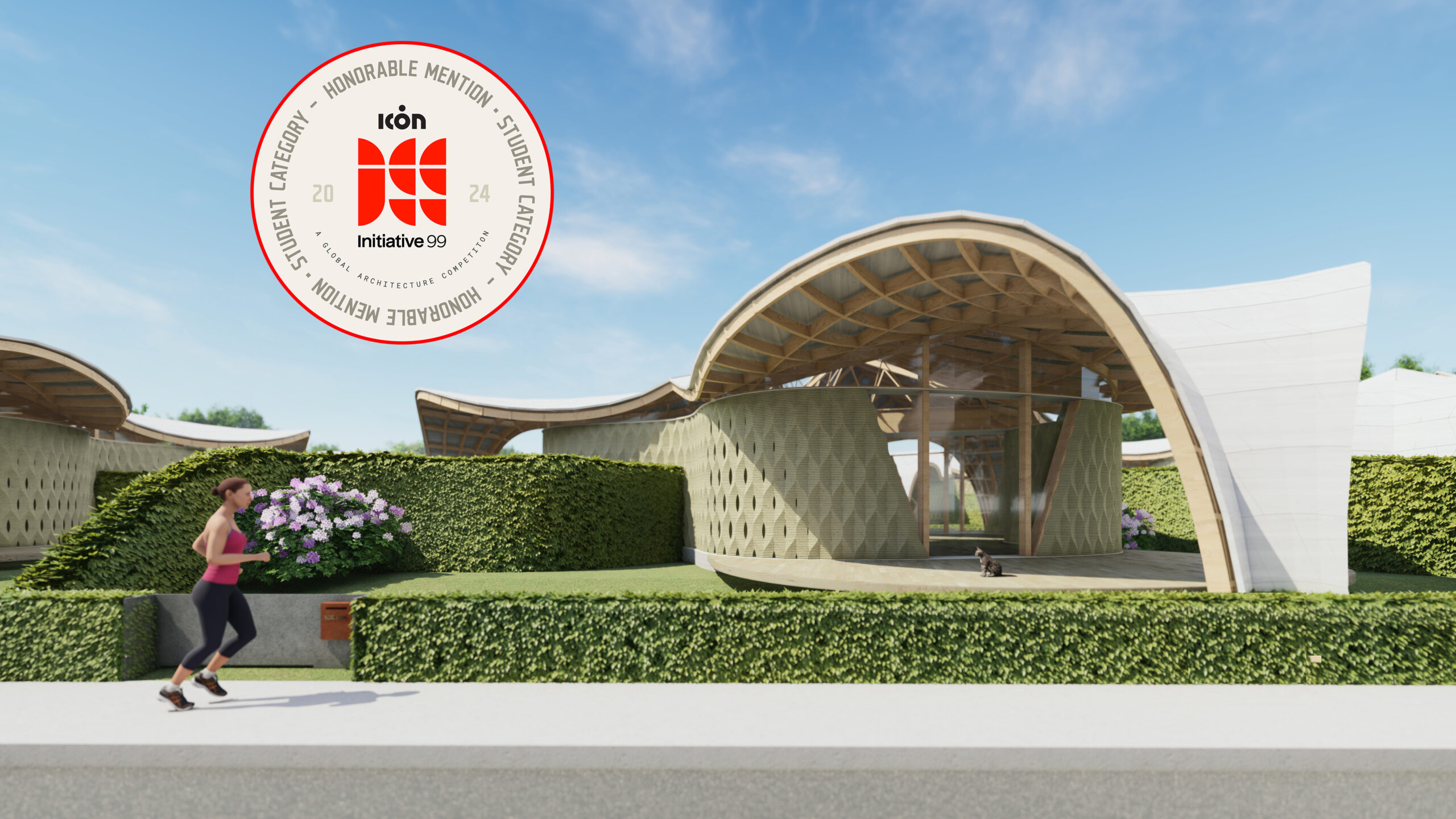Syllabus
3D printing is fastly making its way in the building industry and there are today numerous examples of 3d printed houses and buildings. The construction sector’s reasons for implementing this technology are clear: it doesn’t produce waste, it is automated, it is fast, it uses less material, in other words, it optimises the construction of a building and therefore reduces its cost. These are of course very valuable reasons for turning towards this novel technique, but, as architects, we ask ourselves what are the architectural benefits in order to design, and build, better buildings. And furthermore, can this digital technology lead us to develop an architecture that questions the use of over standardised solutions in construction and lead us to develop buildings that are truly adapted to their users, climates or resources.
Vision, as a course, will seek the design of novel architectural solutions that take advantage of the potential of 3d printing, in other words proposals that possess qualities unachievable without the technology.
3dPA Vision takes the challenge set by american 3d printing company Icon to envision a house for a single family in Austin. The agenda of this course, therefore uses the competition brief and its deliverables as guidelines. The conclusion of the course is twofold: firstly the preparation of a presentation that will be presented at IAAC, and then sent to the competition organisers and hope to be selected and built in Austin! Secondly, it will form the ground for the Valldaura Construction Phase, for which one project might be selected, or several which would then be combined.
The outcome of the course is the design of a single family house presented as a one minute video, accompanied by an on screen presentation, a 3d model and a cost estimate. The video and presentation needs to contain the following documents: plans and sections, interior and exterior renders, construction details and strategy. The request of a 3d file means that your design needs to be printable, or close to it. The request for a cost estimate means that, beyond printing, other elements such as flooring, carpentry, roof etc, need to be designed, and estimated.
The architectural brief requests for the design of a single family house, but contemplates the possibility of this project to be proliferated. You are asked to provide an answer to the question of organisation of multiple dwellings that goes beyond the typical reproduction of identical houses, and address the potential of the technology to produce customised or adaptable solutions. The Icon brief also states the need to identify the user, as a target group, this very complex aspect that will not be the object of a strong development, mainly for time restraints in order to keep a clear focus, you are therefore asked to keep the user to a single family that could be your own!
In terms of gabarit and building technology, the proposal needs to fit within the printing boundaries of an Icon printer – already described and engaged with in Techne6 -, be only one story. Carpentry will be designed as timber and so will the roof structure. In order to keep the focus on 3d printing, and demonstrate its potential, the roof will be studied in a limited time period and will therefore need to keep a certain simplicity. As for TOVA, we will use the American construction system balloon-frame that uses thin timber profiles and does not require heavy machinery for its installation (this decision is partially related to the January and February Construction Phase). When it comes to materiality, Icon as a company focuses on concrete printing. We will elaborate our proposal with earth printing, suggesting in our submission that this would enable a better carbon footprint, but arguing that the proposals could also be printed with concrete.
Vision, this year, aims to capitalise on the Techne phase during which many architectural aspects of 3d printing have already been touched, and strong of the experience of already having designed a proposal hence having gone through – even if incredibly fast – most of the steps leading to a concrete architectural project.
Learning Objectives
At course completion the student will:
- develop a full concept and detail design architectural project
- produce a 3d model of a full architectural project
- produce a comprehensive presentation for architectural competition standards
- work through the different steps of the architectural project
Faculty
Faculty Assistants
Projects from this course
CASA FAMI
A Family-Oriented Home While investigating demographics in Austin, we found that more than one quarter of the families there are single-parent households. Of these, the vast majority are single mothers. With these statistics in mind we arrived at three design considerations: the needs of a single parent household, Austin’s climate, and the unique constraints and … Read more
Nex-Living
3D Print Affordable Pocket Neighborhood ICON Initiative 99 Phase One Honorable Mention in the Student Category Problematic Statement In today’s urban landscape, digital nomads, engaged professionals, and couples face a growing challenge in securing affordable housing that aligns with their dynamic lifestyles. As the demand for affordable housing intensifies, the conventional housing market often falls … Read more






